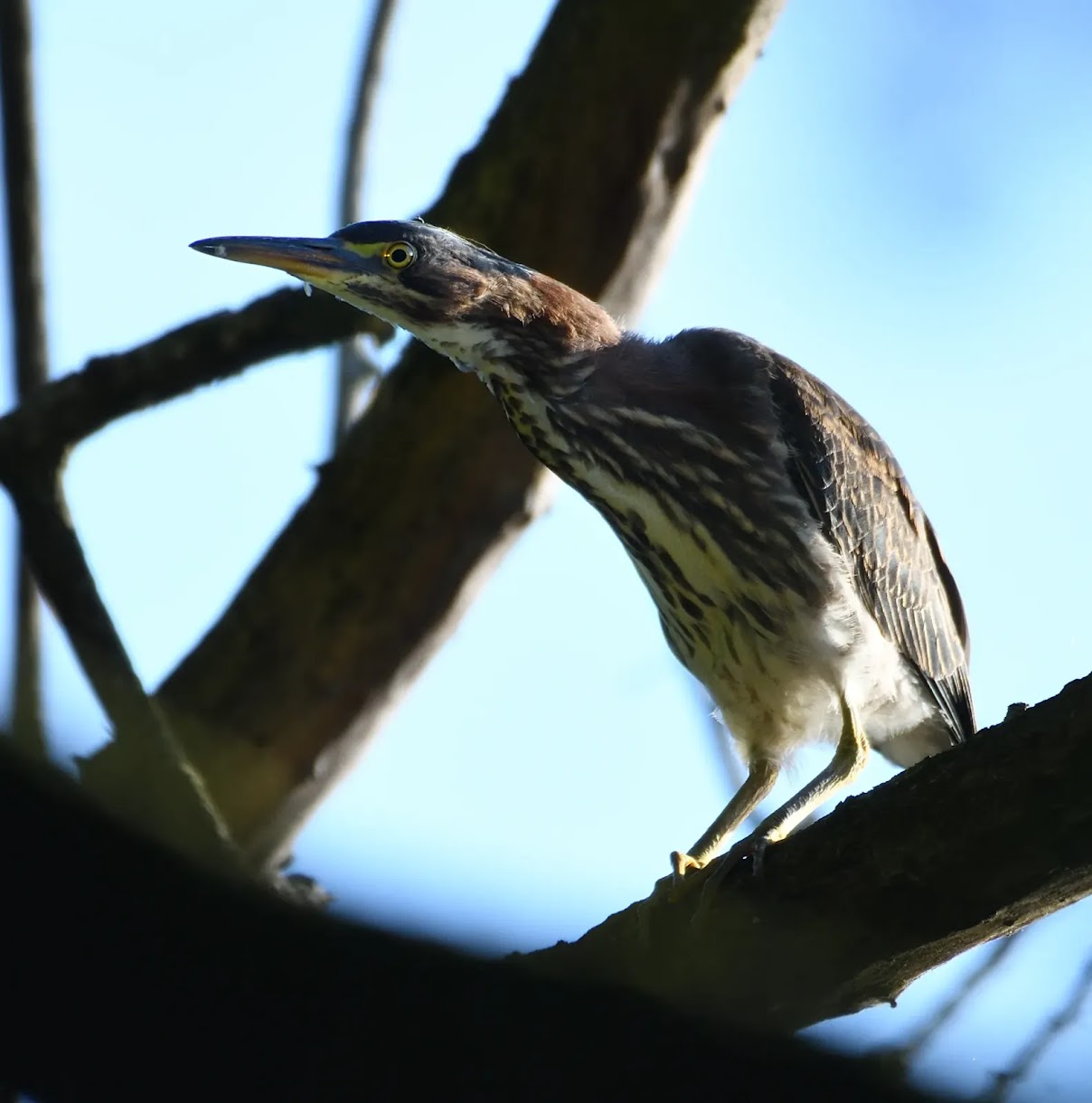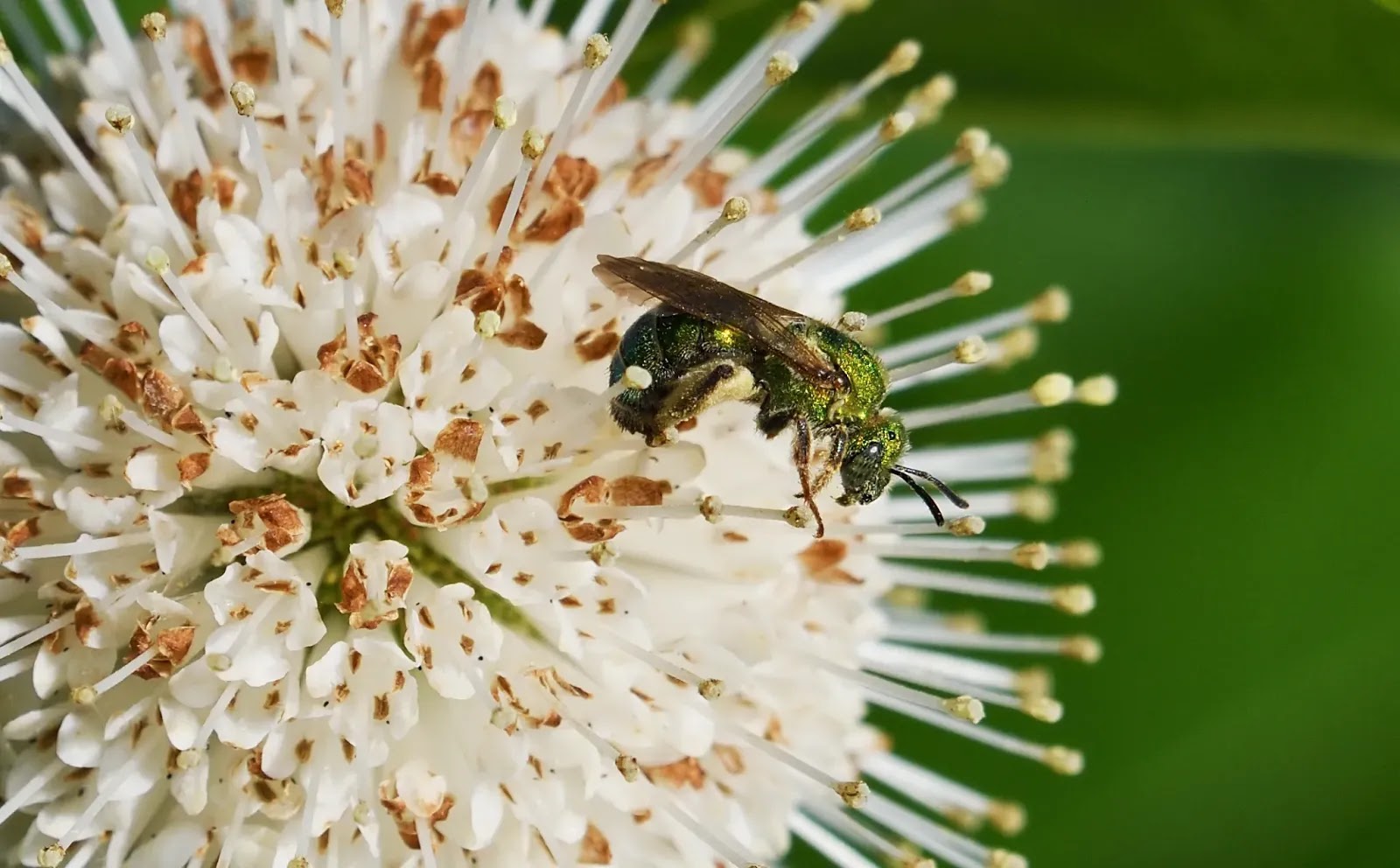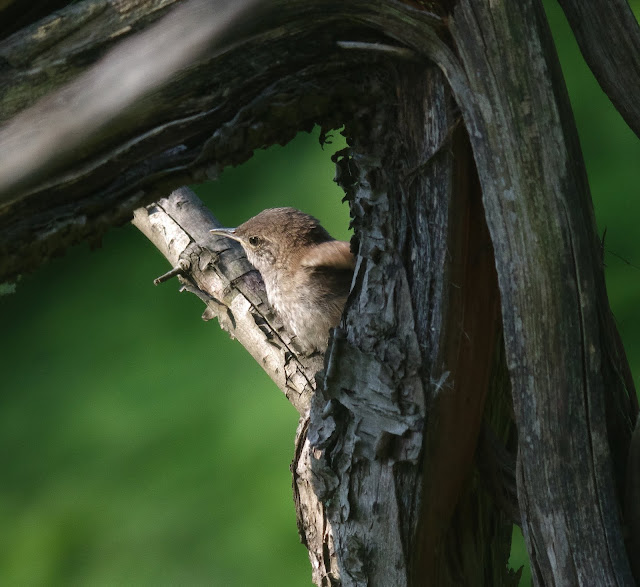Kingfishers and a Green Heron
Viewing the expanse of Shoemaker Lake from the bottom edge of the lake is a great way to start a morning's birdwatching. The whole of the lake is visible and with the aid of binoculars or a camera equipped with a telephoto lens, it's easy to pick out the great blue heron, the kingfishers and on the odd occasion even an osprey.
And now a few photos of the juvenile green heron which had stopped for a minute to preen its feathers as it zig-zagged its way through the black walnut's branches.
I'd already located the kingfishers and this really is a great time to watch them hunt as the young have fledged and are busy honing their fishing skills. They are numerous and at times present all around Shoemaker Lake.
Scanning further around the lake, I located a heron much smaller than the great blue heron. Not a night-heron as they have sadly been missing from Lakeside Park this year, this was a young green heron perched on the dead branches of a black walnut tree. It was way over to my left, standing out, highlighted in contrast to the shade of the black walnut's leaves behind it.
Some kingfishers were also on that side of the lake, and so I just had to try for a few photos.
A young green heron's colouring does not closely resemble an adult's. Here is an image of an adult in all its regal splendour that I was lucky enough to capture from the same location, at the bottom edge of Shoemaker Lake earlier in the year.
I'm not saying that the juvenile is not a beautiful bird, but it does not quite have the same finish to its feathers that the adult has. Its colouring is more suited for camouflage.
A little further along the lake, the kingfishers were busy doing what kingfishers do, spearheading into the water from their lofty perches, sending up cascading sprays of water droplets.
While not being as cautious as their parents, the juvenile belted kingfishers are still wary and it takes a great deal of luck to get close to them.
The males, females and the juveniles all look pretty much the same, so how do you tell them apart? It's all in the breast band or belt.
Females are identifiable from the males by a second band around their belly that has a rusty colour. Belted kingfishers are one of the few species of birds where the female is more brightly coloured than the males.
Juveniles, both male and female also have that rusty colour mixed in with the bluish colour of their breast band.
Here is a young female.
And here is a male, showing just the single bluish band around its chest.
Catching fish is of course what the belted kingfishers are all about, and I, unfortunately, do not have any good quality photos of the kingfishers with a fish. Either the fish was obscured or they were simply too far away.
Here is a quick sketch that I drew from one of those photos.
While they are occasionally chased by the red-winged blackbirds as they fly over the edge of the reed beds, the belted kingfishers are usually able to perch in peace as they wait for their next opportunity.
That is when this bird is not present.
Kingbirds are fiercely defensive and will take on birds much larger than themselves.
I remember observing one parent last year riding on the back of an osprey as it pecked at the osprey's neck, driving the osprey away from the lake and the kingbird's nest.
The belted kingfishers moved up above me and then off to the far side of Shoemaker Lake.
Leaving me looking for something else to focus on, and when I looked down to my left again, there was the young green heron and it had its eye on something.
I'm not quite sure how this was physically possible, but the green heron was able to support its body at full stretch horizontally. Unfortunately, it missed the blue dasher dragonfly.
I captured one redeeming photo of the young green heron, showing that it too can look almost as splendid as an adult.
The green heron then closely followed the kingfishers, flying up above me to the same perch the belted kingfisher had used and then off to the far side of Shoemaker Lake.
Of course, as soon as I mention that I have not seen a bird at Lakeside Park this year it suddenly appears a few days later.
Here is the black-crowned night-heron pictured on the far side of Shoemaker Lake.
Copyright © wildlakeside.blogspot.com 2020 Scott Atkinson All Rights Reserved.





















Amazing, Scott.
ReplyDeleteThank you!!
ReplyDelete